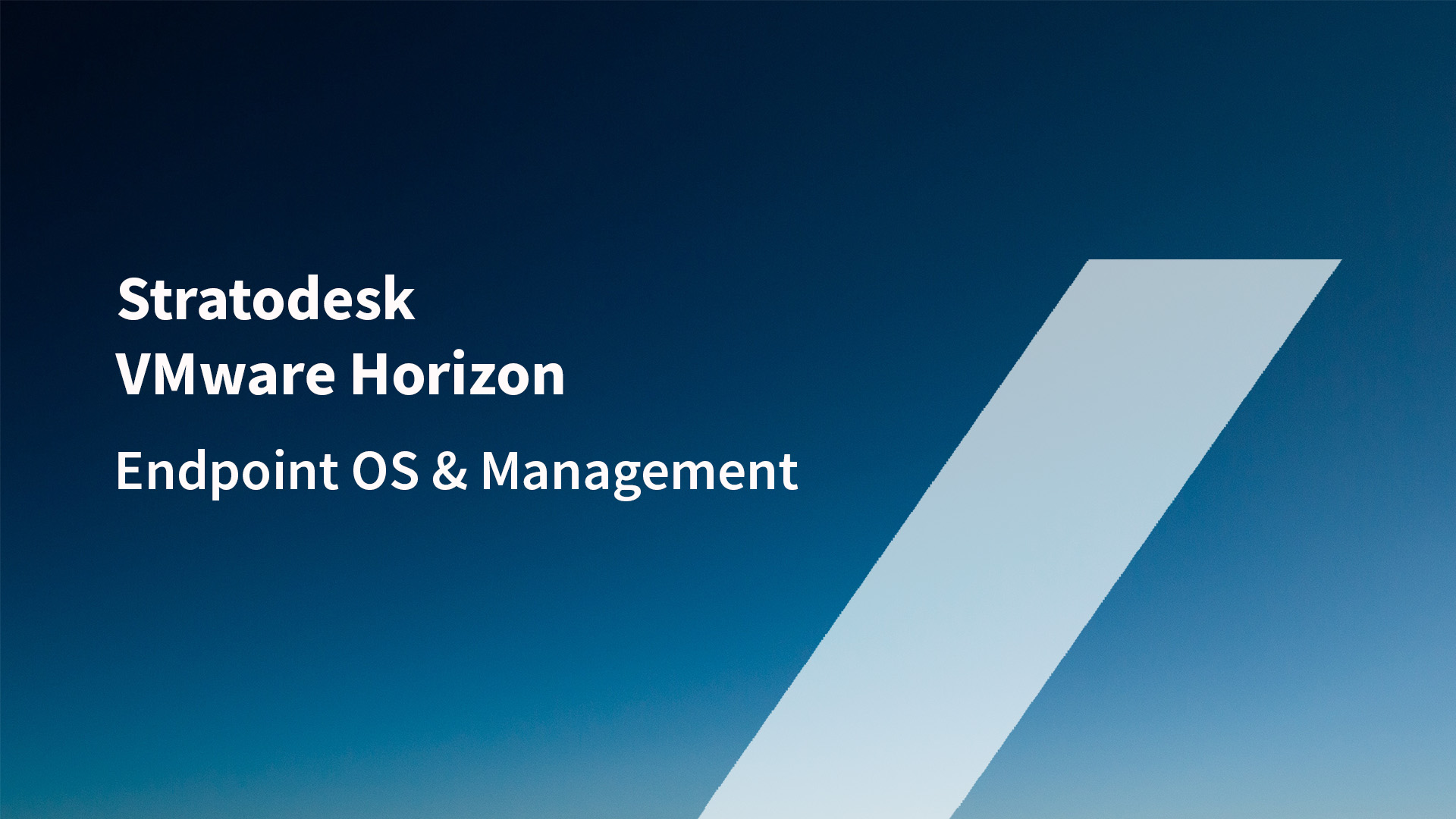A new white paper explores how Stratodesk works with VMware Horizon to offer an all-in-one solution for endpoint computing and management.
In this white paper, learn how Stratodesk software solves common challenges facing VMware Horizon deployments.
VMware is one of the top VDI vendors in the world and is regarded as the leading solution provider helping companies make the initial jump to VDI.
Stratodesk NoTouch Desktop is its ideal complement, offering an all-in-one solution for endpoint management and computing.
By centralizing IT management, reducing costs, securing endpoints and simplifying desktop deployment, NoTouch Desktop ensures your ability to harness the full effect of your VMware Horizon deployment.
VMware Horizon and Stratodesk Work Together to Deliver an All-In-One End User Computing Solution
Virtual Desktop Infrastructure (VDI) provides productivity, manageability, and security benefits to large enterprises, SMBs, and other organizations across multiple industries. However, making the leap to VDI is not without its share of challenges. Businesses and organizations must make significant investments and overcome many obstacles before they can get the full benefit of virtual desktops. For large enterprises in particular, overhauling an entire network of existing devices is a financial difficulty. Beyond hardware costs, there are the inevitable costs involved with Windows licensing, malware protection, IT maintenance, and more.
The Windows Issue
In order to allow for VDI, organizations often run Windows on each of their endpoint devices. Once Windows is deployed, it then requires significant IT overhead to maintain. Not to mention IT must also provide antivirus and malware protection for each and every device. To make things worse, different devices house different versions of Windows, so standardizing these endpoints can be difficult. The cost associated with all of the above is high and poses a significant difficulty to be overcome by IT staff.
Security and Accessibility Concerns
Another struggle facing IT administrators is that of security. Always a key concern, system admins must not only increase security but must also ensure end users can quickly and conveniently access important apps and data whenever and wherever they need them. For this reason, IT administrators have an equally high demand put not only on budget and security, but also on convenience. Convenience is the third point, and cannot be stressed enough. Without an endpoint solution in place that is convenient and one that offers a seamless user experience, organizations can quickly lose the many benefits of VDI.
The Bottom Line
Thus, without the right solution in place, IT will eventually be saddled with increased support costs, antivirus licenses, and the high costs associated with a complete overhaul of their devices. Moreover, running a network where there is a mixture of various Windows OS versions on the desktop means more work for IT and adds a layer of complexity to your supposedly easier-to-operate VDI network. A largely Windows-based desktop infrastructure coupled with the susceptibility of Windows to malware attacks and viruses make the move to VDI at times seem more of a threat to an organization’s sanity rather than a beneficial solution to its problems.
Stratodesk and VMware Horizon Solve Common Challenges Facing VDI Deployments
VMware is one of the top VDI vendors in the world today and is regarded for having provided the ideal solution to help companies make the initial jump to VDI. And Stratodesk NoTouch Desktop is its ideal complement, offering an all-in-one solution for endpoint management and computing. By centralizing IT management, reducing costs, securing endpoints and simplifying desktop deployment, NoTouch Desktop ensures your ability to harness the full effect of your VMware Horizon deployment.
Customers who use NoTouch Desktop can expect various benefits ranging from cost to security. For example, in higher education, Stratodesk has saved an average of $30,000 per year by repurposing hardware and cuts approximately 13 weeks of redundant IT staff hours by eliminating the need for time-consuming, manual maintenance and patching of endpoints. Additionally, 1,215 hours per year have been reclaimed by organizations thanks to faster log-ins.

